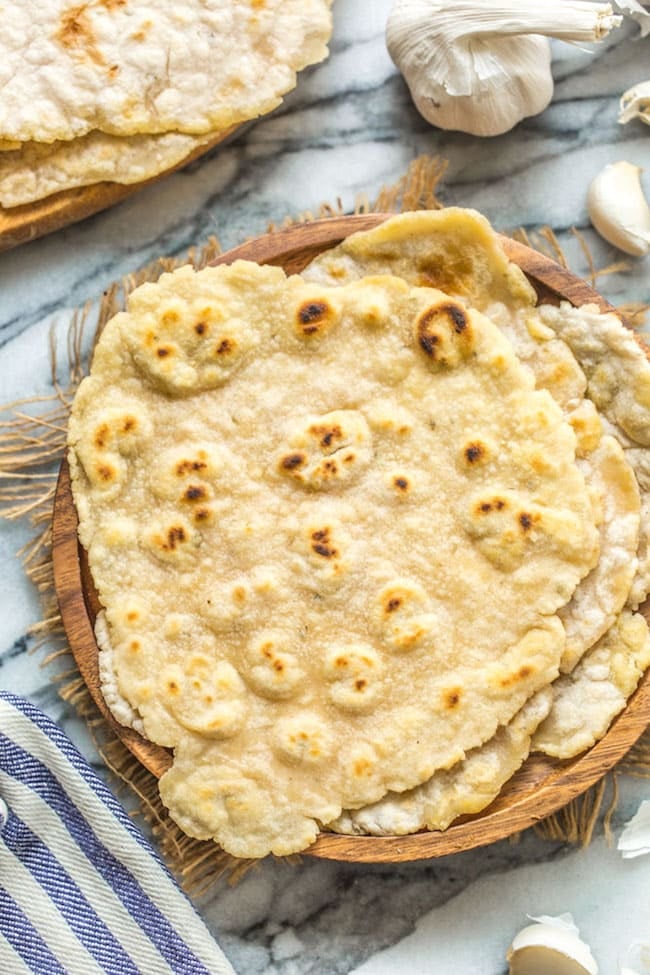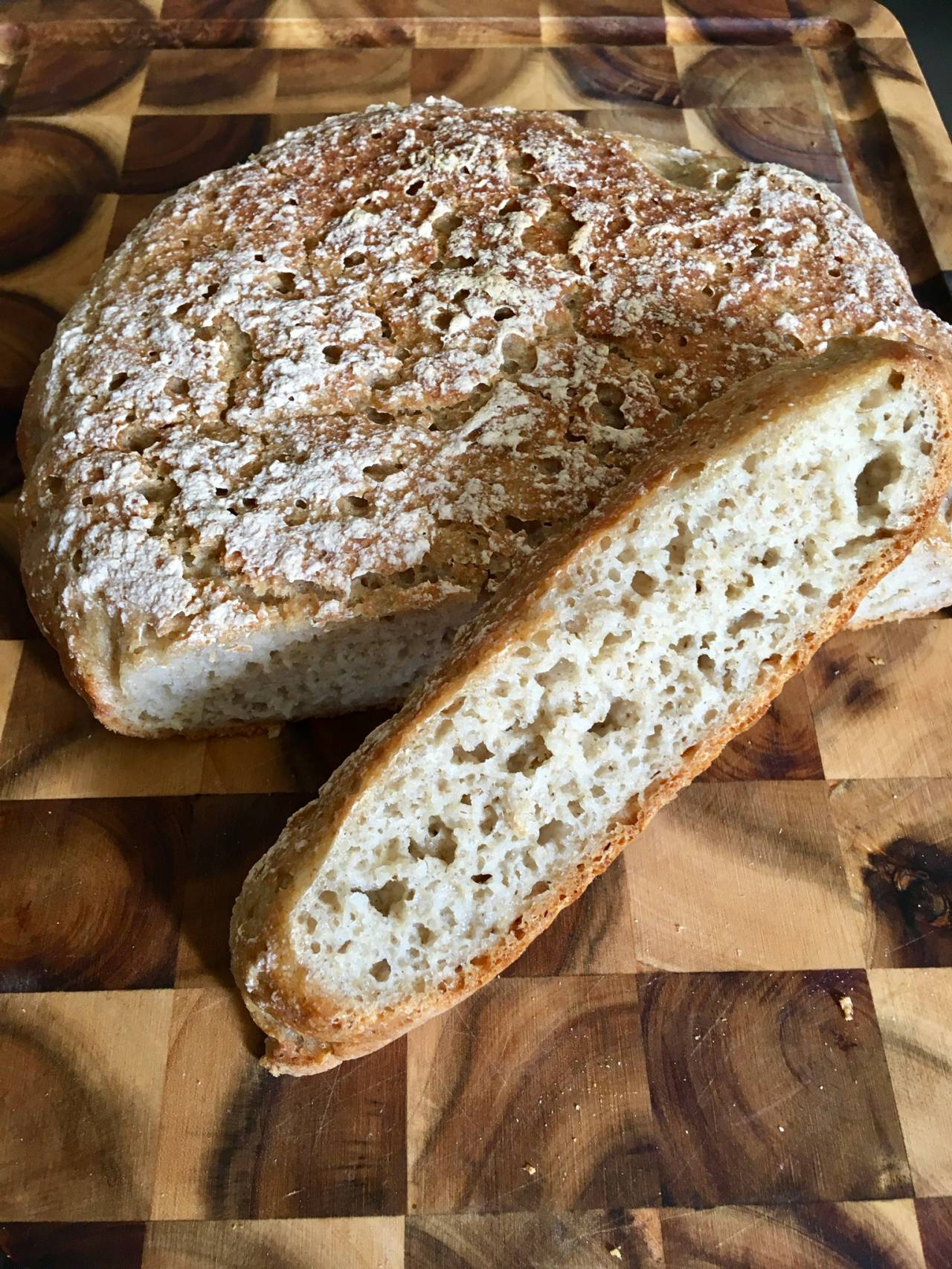

The process yields a flour-like powder with a 7% moisture content, which is air cooled and pneumatically transported to a receiving vessel. About 65% of the water in the wet gluten is removed by means of a screw press the remainder is sprayed through an atomizer nozzle into a drying chamber, where it remains at an elevated temperature for a short time to allow the water to evaporate without denaturing the gluten. This mass is collected by centrifugation, then transported through several stages integrated in a continuous process. In industrial production, a slurry of wheat flour is kneaded vigorously by machinery until the gluten agglomerates into a mass. This gives the baker a measurement of quality for different varieties of flours when developing recipes for various baked goods. The strength and elasticity of gluten in flour is measured in the baking industry using a farinograph. Shortening inhibits formation of cross-links and is used, along with diminished water and less kneading, when a tender and flaky product, such as a pie crust, is desired. An increased moisture content in the dough enhances gluten development, and very wet doughs left to rise for a long time require no kneading (see no-knead bread). The "chewiness" increases as the dough is kneaded for longer times. Kneading promotes the formation of gluten strands and cross-links, creating baked products that are chewier (as opposed to more brittle or crumbly). Generally, bread flours are high in gluten (hard wheat) pastry flours have a lower gluten content. Using flour with higher gluten content leads to chewier doughs such as those found in pizza and bagels, while using flour with less gluten content yields tender baked goods such as pastry products. Gluten's attainable elasticity is proportional to its content of glutenins with low molecular weights, as this portion contains the preponderance of the sulfur atoms responsible for the cross-linking in the gluten network. The formation of gluten affects the texture of the baked goods. Cross-section of a baguette showing a strong gluten network Gluten content has been implicated as a factor in the staling of bread, possibly because it binds water through hydration. Baking coagulates the gluten, which, along with starch, stabilizes the shape of the final product. If this dough is leavened with yeast, fermentation produces carbon dioxide bubbles, which, trapped by the gluten network, cause the dough to rise. Gluten forms when glutenin molecules cross-link via disulfide bonds to form a submicroscopic network attached to gliadin, which contributes viscosity (thickness) and extensibility to the mix. Uses Wheat, a prime source of gluten Bread products

These disorders are treated by a gluten-free diet. The spectrum of gluten related disorders includes celiac disease in 1–2% of the general population, non-celiac gluten sensitivity in 0.5–13% of the general population, as well as dermatitis herpetiformis, gluten ataxia and other neurological disorders. Gluten can trigger adverse, inflammatory, immunological, and autoimmune reactions in some people. Bread produced from wheat grains contains gluten. The storage proteins in other grains, such as maize ( zeins) and rice ( rice protein), are sometimes called gluten, but they do not cause harmful effects in people with celiac disease. These protein classes are collectively referred to as "gluten". Its homologous seed storage proteins, in barley, are referred to as hordeins, in rye, secalins, and in oats, avenins. Wheat gluten is composed of mainly two types of proteins: the glutenins and the gliadins, which in turn can be divided into high molecular and low molecular glutenins and α/β, γ and Ω gliadins. These properties, and its relatively low cost, make gluten valuable to both food and non-food industries. Glutens, especially Triticeae glutens, have unique viscoelastic and adhesive properties, which give dough its elasticity, helping it rise and keep its shape and often leaving the final product with a chewy texture. Gluten makes up 75–85% of the total protein in bread wheat.

These include any species of wheat (such as common wheat, durum, spelt, khorasan, emmer and einkorn), barley, rye and some oat cultivars, as well as any cross hybrids of these grains (such as triticale). Although "gluten" often only refers to wheat proteins, in medical literature it refers to the combination of prolamin and glutelin proteins naturally occurring in all grains that have been proven capable of triggering celiac disease. Gluten is a structural protein naturally found in certain cereal grains.

Examples of sources of gluten (clockwise from top): wheat as flour, spelt, barley, and rye as rolled flakes For the food made from gluten, see Seitan.


 0 kommentar(er)
0 kommentar(er)
